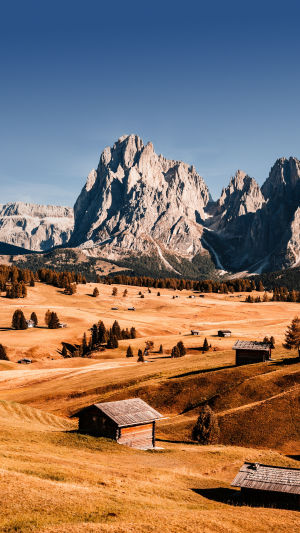The Dolomites are situated on the border between the Veneto and Trentino-Alto Adige regions in northeastern Italy, with a core protected area of 1359.11 square kilometers.
The Dolomites Heritage Site is part of the Alpine system of northern Italy and boasts 18 peaks that rise above 3000m.
The sequential heritage site is made up of nine areas that showcase the breathtaking diversity of mountain scenery, including iconic landscape types from international geomorphological studies such as peaks, summit needles, rock walls, glacial landforms, and karst landform systems.
Frequent landslides, floods, and avalanches stage dynamic geological change processes of considerable character.
The Dolomites are a world-renowned tourist destination, famous for its magnificent mountains, unique and fascinating peaks, and charming villages.
The pure air, picturesque scenery, and a wide range of activities all year round make the Dolomites a center of international tourism, especially in winter.
Arturo Toscanini, an Italian conductor and cellist, used to enjoy walking in the Alpine Huis. However, there is no doubt that Cortina has been the 'Queen of the Dolomites' since it was discovered by German and Austrian aristocrats and British mountaineers in the late 19th century.
It was the 1956 Winter Olympics in Cortina, Italy, that revived tourism in the Dolomites.
The film boom that followed led to a new phase in the development of the mountains. Cortina became the setting for many films, such as the 1981 release of Agent 007: For Your Eyes Only, starring Roger Moore.
Before that, the first episode of the Pink Panther series, starring Peter Sellers and David Niven, was filmed on location in Cortina in 1962.
Since then, the Dolomites, particularly Cortina and the increasingly popular Badia Valley in recent years, have become a playground for the rich, aristocrats, film directors, actors, athletes, artists, and titans of industry and the international economy.
The Dolomites are also a rock climber's paradise.
The Cinque Torri and Lagazuoi mountains have open-air museums. Many visitors come to the Dolomites to climb the Via ferrata, a form of climbing in which the route is secured by ropes, metal stirrups, and even ladders.
These protected trails were first established in the Dolomites. Many long hiking trails run through the Dolomites, called "Alte vie" (high trails), which are numbered from 1 to 8 and take at least a week to cross the peaks, with a large number of huts along the way.
Despite the breathtaking scenery and rich cultural heritage of the Dolomites, it is important to note that human activities, such as tourism and skiing, have had a significant impact on the ecosystem.
For this reason, in 2009, the Dolomites were declared a UNESCO World Heritage Site in recognition of their universal value as a natural wonder and the need to preserve and protect them for future generations.
The Dolomites are a true natural wonder that offers breathtaking views, unique and fascinating peaks, and charming villages that make it a popular destination for tourists from all over the world.
Its cultural heritage and its role in the film industry have only added to its appeal. However, it is important to remember that we have a responsibility to protect and preserve the Dolomites for future.





